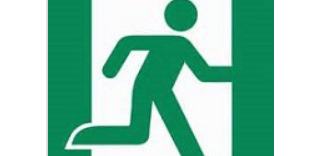We all know that some of our customers churn out of our products. What if we could predict which customer is next most likely to defect to a competitor. if we knew that, we could proactively offer our customers some sort of special attention, such as a discount or a loyalty thank you gift, and reduce the risk of the customer defecting.
Lets consider a fictitious example: we have a list of 10,000 companies who are customers and former customers who defected to the competitor. The data has a field called product with two values: Alpha (our product) and Beta (competitors product). Customers own with Alpha or Beta, never both. For simplicity, we will assume that 5% of our customers have defected to Beta.
Predicting customers likely to churn is like predicting who will get the flu.
Finding Look-a-likes during flu season
Every flu season health professionals are interested in knowing who is most at risk of getting the flu so they get flu shots to those high risk groups. Effectively they want to understand the groups who had the highest flu rates, and then find “look-a-likes” who are most in need of a flu shot this season. Those who are predicted to be vulnerable are those groups of people who had a higher incidence of influenza infection compared to the population. For example, if the rate of influenza last year in the general population was 5%, but it was 18% among the elderly, then we might predict that elderly are at risk and should be given a flu shot. The data may also suggest that young children and day care workers working with young children are predicted to be vulnerable. Every year the medical community proactively targets patients in these high risk groups with offers to get the flu shot.
We want to find Look-a-likes of customers who churned
The data mining technique we use to predict defectors is called Classification. This is one of the bread and butter data mining techniques that has many applications business. We supply the data mining system data about our 10,000 customers including whether they have Alpha or Beta, and additional financial, firmographic, product history and industry information about each customer.
The data mining system uses statistical techniques to try and find “look-a-likes” of those customers who own Beta, that is, those customers who churned. For example, perhaps customers in the states of Georgia and Florida have a churn rate of 15%, which is 3 times larger than the 5% overall rate among all customers. We are doing what the medical community does in trying to find those groups that had a hgi The system deeply examples the customers who have Beta to understand what they look like. What are their characteristics based additional information about things such as financials, firmographics, purchase history, and industry. The data mining system scans through the customer list and find patterns of similarity between these customers, and estimate which other customers are likely to do the same (ie purchase product A and Product B).
Finding the next customer to churn and providing the customer some proactive action like a loyalty discount, is like predicting who is at risk of getting the flu and who should get the influenza vaccine.
Next: How do we know how effective the prediction is? Understanding False Positives and False Negatives
